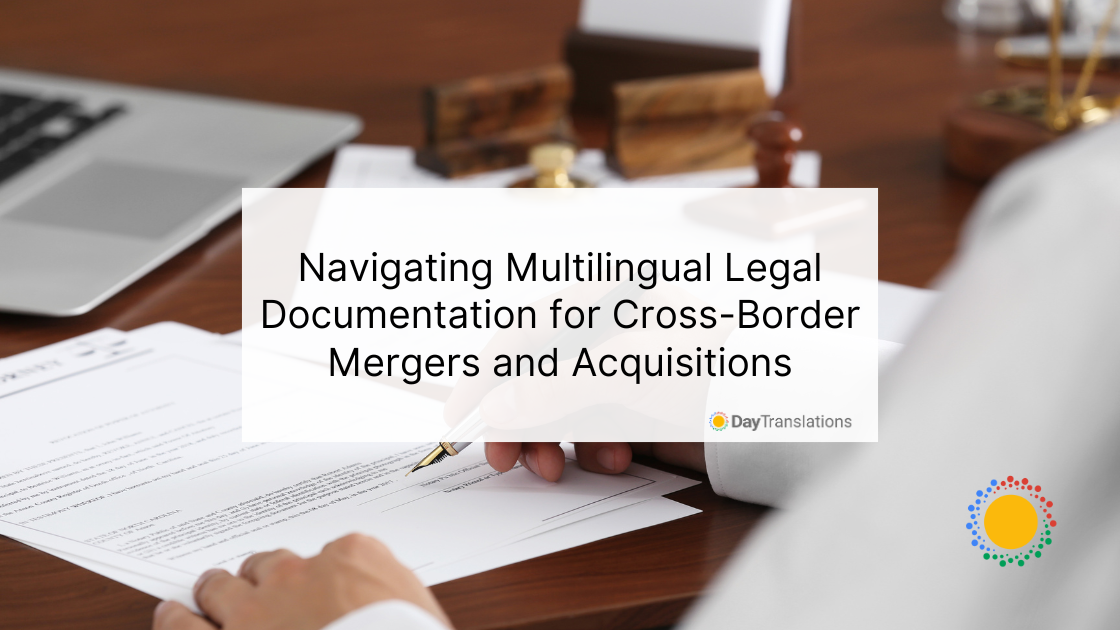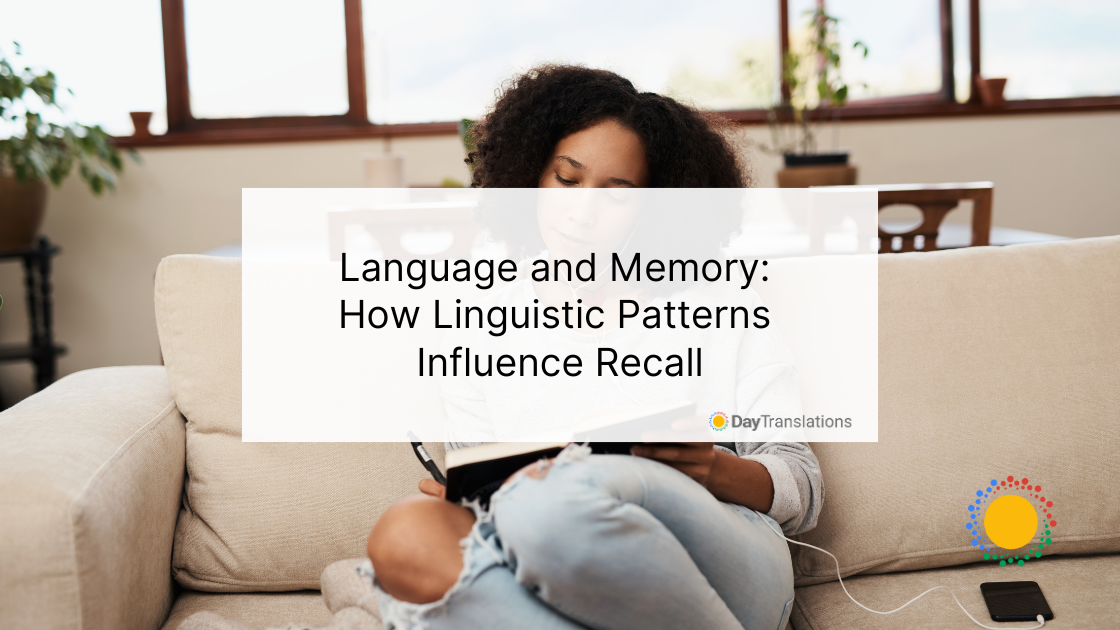Cross-border mergers and acquisitions (M&A) are a key strategy for companies looking to expand internationally and access new markets. In 2023 alone, 21.4% of all M&A deals were cross-border, meaning that over one-fifth of all M&A deals were cross-border. This shows that cross-border M&A is not only a significant trend but also a crucial driver of global business growth. However, handling the legal paperwork in different languages and countries can be challenging. This article will explore the difficulties and share tips on how to manage legal documentation in international M&A deals.
The Complexities of Multilingual Legal Documentation
The complexities of multilingual legal documentation are rooted in the intricate interplay between language, law, and culture.
Jurisdictional Variances
Different countries have their own legal systems, each with unique rules, regulations, and legal frameworks. What is legally binding in one country might not be recognized in another. This creates a significant challenge when drafting or translating legal documents.
Legal terms, procedures, and requirements can vary widely, meaning that a direct translation might not capture the full legal implications in the target language.
Furthermore, lawyers must ensure that translated documents comply with the legal standards of all relevant jurisdictions, which often requires in-depth knowledge of local laws.
Legal Terminology Differences
Legal terminology is often highly specialized and varies not only between languages but also within different legal systems.
A legal term in one language might not have a direct equivalent in another. This can lead to potential misunderstandings or misinterpretations depending on circumstances.
For instance, the concept of “common law” in English-speaking countries does not have a counterpart in many civil law jurisdictions. Translators must be adept at not just translating words but also conveying the exact legal meaning. This may involve rephrasing or providing additional context to ensure the legal intent is preserved.
Cultural Nuances
Legal documents are not just a collection of legal terms; they are also influenced by the cultural context in which they are created. Different cultures have varying approaches to contracts, negotiations, and dispute resolution.
These cultural differences can affect how legal documents are interpreted. For example, what is considered a standard contract clause in one country might be seen as unusual or even offensive in another. Translators and legal experts need to be sensitive to these cultural nuances to ensure that the document is not only legally accurate but also culturally appropriate.
Maintaining Consistency Across Languages
Even minor differences in wording between language versions can lead to varying interpretations, potentially causing disputes or legal issues.
This can lead to serious issues for both seasoned new and seasoned businesses trying to carry out cross-border mergers and acquisitions. This is because misunderstandings can result in contract breaches, financial penalties, or damage to business relationships.
To prevent this, it requires meticulous attention to detail and often involves multiple rounds of review by both legal experts and translators to ensure that all language versions are aligned.
For entrepreneurs, especially those who are just starting a new business, managing these complexities can be challenging. They often lack the resources or experience needed to handle the intricacies of legal translations effectively.
This is why investing in professional translation services and legal counsel can be crucial in avoiding potential pitfalls and ensuring the long-term success of their business.
Strategies for Maintaining Accuracy and Coherence
Maintaining accuracy and coherence in multilingual legal documents is key to meeting legal requirements and avoiding disputes or invalid contracts. It also preserves the original intent, protecting the agreement’s integrity.
1. Leverage Specialized Translation Teams
Working with specialized translation teams is one of the best ways to ensure accuracy in multilingual legal documentation. These teams consist of professional translators who have expertise in both the legal field and the languages involved.
They understand the nuances of legal terminology and can accurately convey the intended meaning in the target language. Their awareness of cultural and legal differences also ensures that the document is both legally accurate and culturally appropriate.
2. Integrate Legal Expertise with Linguistic Precision
Legal experts should provide detailed explanations of the legal concepts and terms used in the documents, while translators work to ensure these concepts are accurately reflected in the translated version.
This collaboration avoids common pitfalls, such as mistranslations or misinterpretations of legal terms, which can lead to inconsistencies or legal challenges. Legal professionals can review the translated documents to ensure they meet the necessary legal standards in each jurisdiction involved.
3. Establish Clear Translation Protocols
Creating standardized guidelines for translators and legal teams is essential to maintaining consistency across all documents.
These guidelines should include preferred terminology, formatting, and style for translations. They should also outline the steps for extracting and transferring data, as well as the process for reviewing and approving translated documents.
Clear translation protocols minimize variations between different versions of a document and ensure that all translations adhere to the same high standards. This makes the translation process easier to manage and reduces the likelihood of errors.
4. Put in Place Stringent Quality Assurance Process
A robust quality assurance (QA) process is critical to ensuring the accuracy and coherence of multilingual legal documents. This process should involve multiple rounds of review by both legal experts and translators to catch any errors or inconsistencies before the final document is approved.
The QA process should also include a final review by a third party, if possible, to provide an unbiased assessment of the document’s accuracy and consistency. Implementing a thorough QA process helps prevent potential legal issues and ensures that the final document is legally sound and linguistically accurate.
5. Leverage Technology for Translation and Collaboration
Technology advancements have made it easier to manage multilingual legal documentation. Tools like computer-assisted translation (CAT) software and translation memory systems help translators maintain consistency by storing and reusing previously translated terms. This helps reduce the risk of errors.
Collaboration tools, such as shared online platforms, facilitate communication between legal teams and translators, making it easier to coordinate efforts and ensure that all parties are aligned.
How to Effectively Manage Collaborative Efforts Between International Legal and Translation Teams
Effective collaboration helps prevent miscommunication, inconsistencies, and errors that could jeopardize the validity of the documents.
1. Establish Clear Communication Channels
Effective collaboration begins with clear and open communication. Setting up dedicated communication channels, such as shared platforms, project management tools, or regular meetings, ensures that both legal and translation teams are on the same page.
Additionally, simplifying access to translated documents can significantly improve collaboration, especially with international partners. You can even use a QR code scanner that links directly to different language versions of documents. This method allows decision-makers to quickly access the information they need without sifting through multiple email attachments, which not only streamlines communication but also helps keep everyone focused on the task at hand.
This improves efficiency, ensures that all parties are on the same page, and ensures that the translation process is smooth and accurate.
2. Define Roles and Responsibilities
Clearly defining each team member’s roles and responsibilities is essential for smooth collaboration. For instance, legal teams should outline the legal concepts, requirements, and specific terminology that need to be accurately conveyed in the translated documents.
Meanwhile, translation teams should focus on ensuring that these legal concepts are accurately translated while maintaining linguistic and cultural accuracy.
Having a clear understanding of who is responsible for what helps prevent overlaps and gaps in the workflow. This ensures that every aspect of the document is handled by the appropriate experts.
3. Develop Standardized Processes and Guidelines
Standardizing processes and guidelines should include preferred terminology, formatting, and style, as well as specific instructions for handling legal terms that may not have direct equivalents in other languages.
Creating a style guide or glossary can be a helpful reference for translators and legal professionals alike. This standardization reduces the risk of inconsistencies and ensures that all translations meet the same high standards.
4. Foster a Collaborative Culture
Both the legal and translation teams should recognize the value of each other’s expertise and work together towards a common goal. This can be fostered through joint training sessions, workshops, or team-building activities that help build trust and understanding between the teams.
When both teams feel valued and understood, they are more likely to collaborate effectively and produce high-quality, accurate legal documentation.
Conclusion
Navigating multilingual legal documentation in cross-border mergers and acquisitions demands more than just translation. It requires precision, collaboration, and a deep understanding of legal and linguistic nuances.
Ensuring the complexities are managed successfully upholds the integrity of legal agreements, protecting all parties involved from potential risks.
Author Bio
Nahla Davies is the editor and writer over at Nahlawrites.com












Sorry, the comment form is closed at this time.